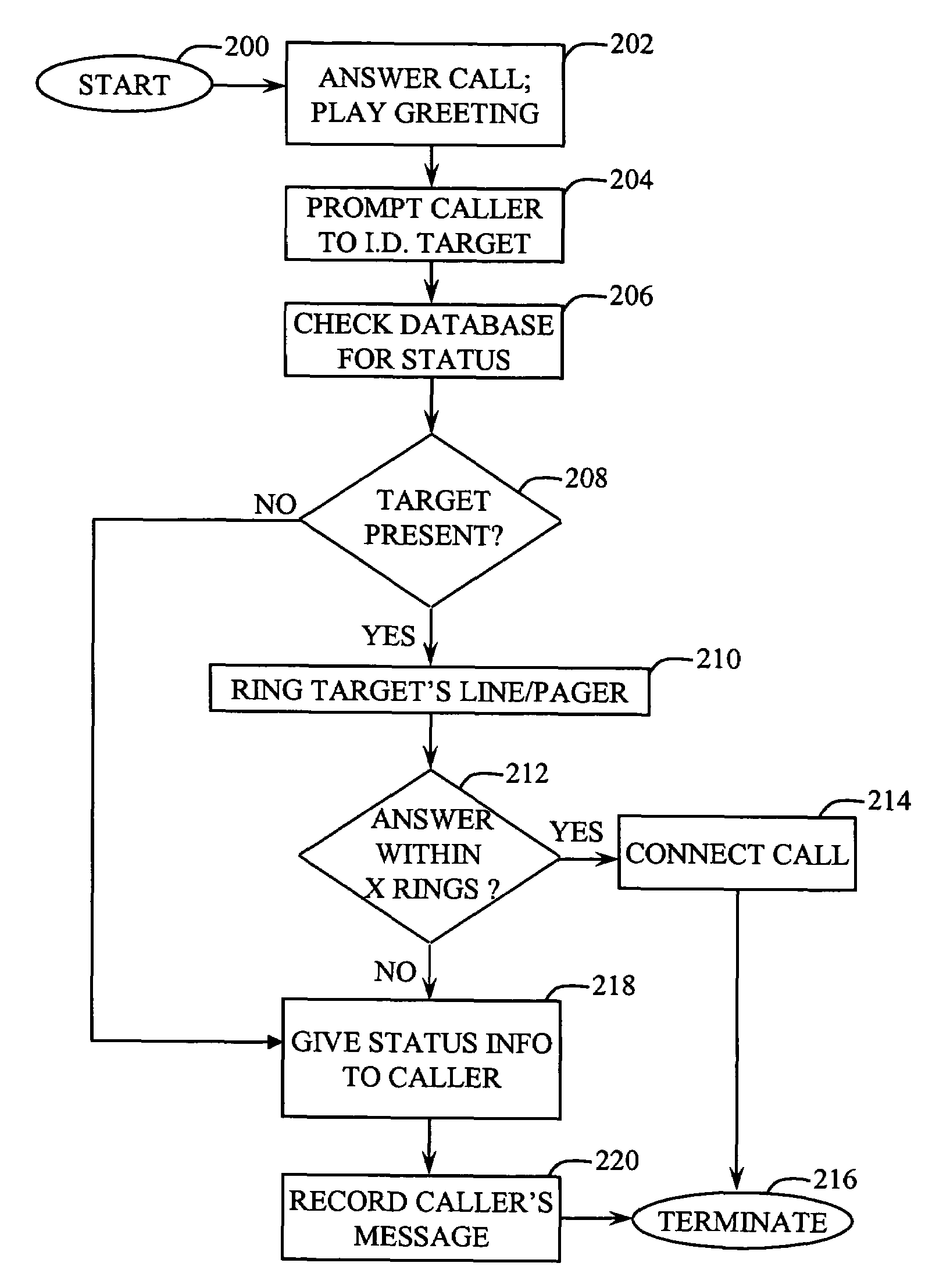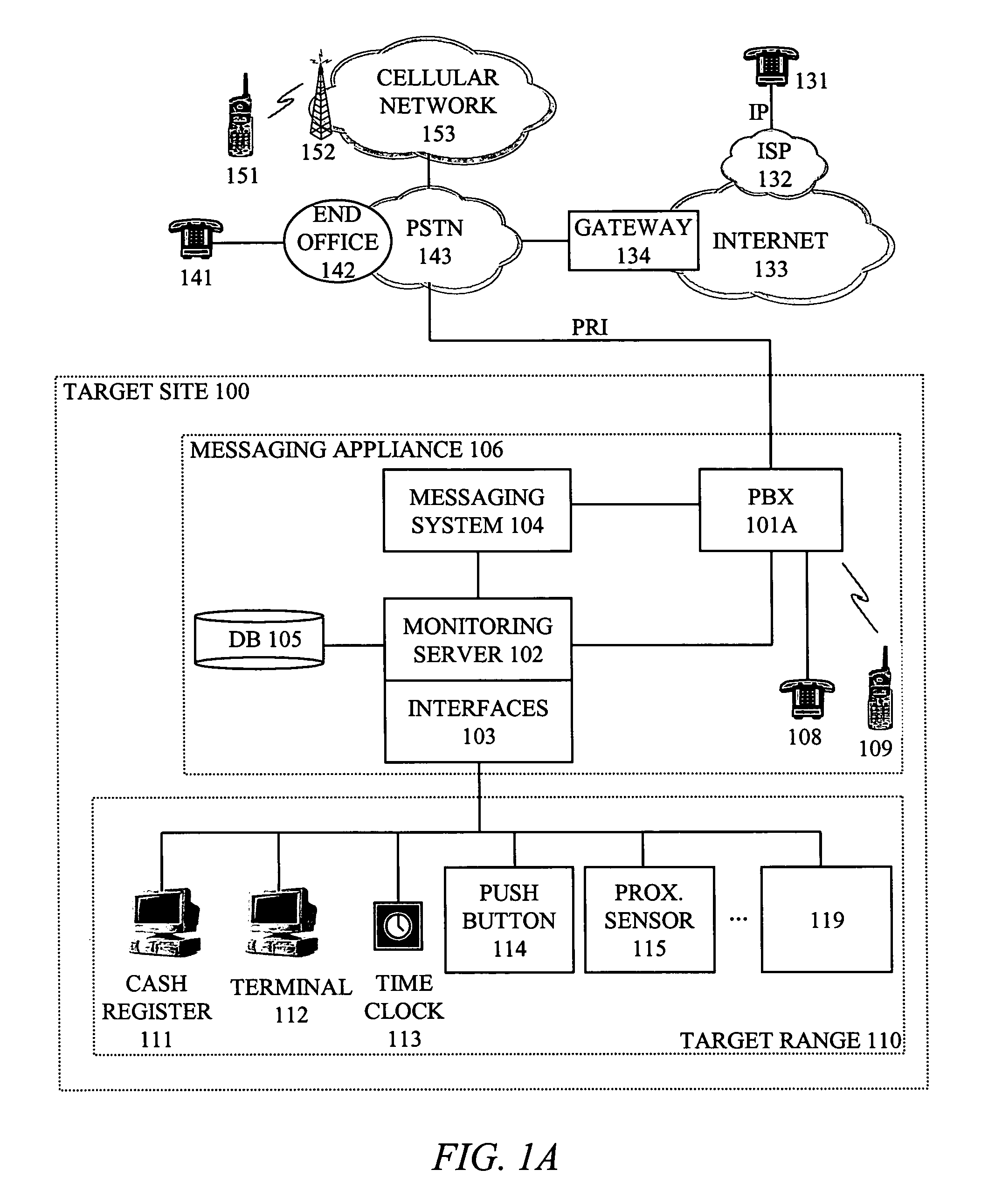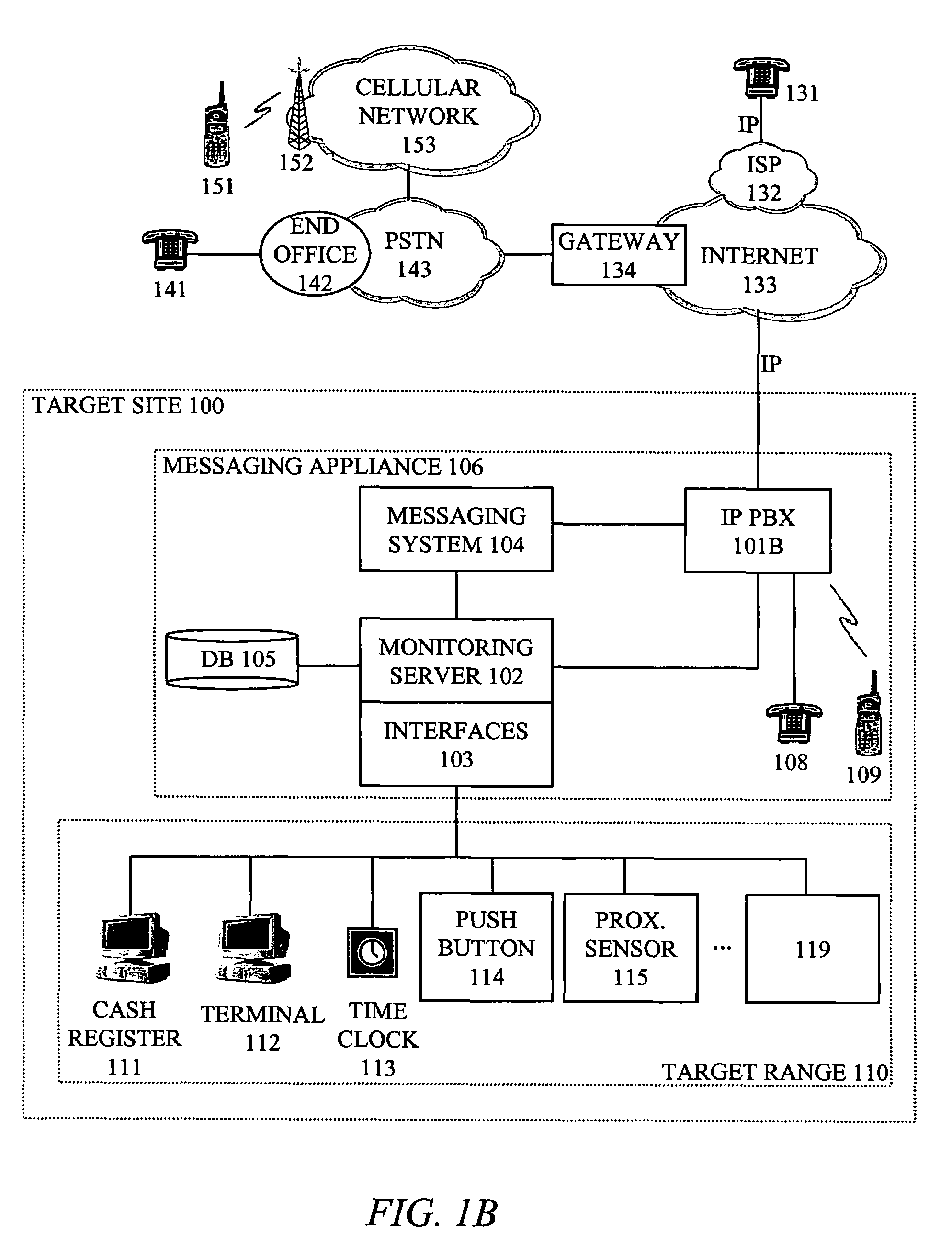Arrangement for indicating presence of individual
a technology for indicating the presence of individuals and groups, applied in frequency-division multiplexes, instruments, program control, etc., can solve the problems of customer dissatisfaction, instruction is not always followed, and voicemail systems cannot provide the customer with a reliable indication
- Summary
- Abstract
- Description
- Claims
- Application Information
AI Technical Summary
Problems solved by technology
Method used
Image
Examples
first embodiment
[0030]FIG. 1A illustrates a presence indication arrangement, one involving a primary-rate interface (PRI) between a public switched telephone network (PSTN) and a target site's private branch exchange (PBX).
[0031]For the present discussion it is assumed that a customer desires to contact an employee (“target”) at a store location or enterprise generally indicated as target site 100. The employee is presumed to have an area, called a target range 110, in which roam while he can be contacted by customers or at least indicate that he can be contacted. In the case of most hardware store employees, the target range 110 occupies some or essentially all of a target site 100 because the employee may conceivably roam anywhere in the store but still be contacted.
[0032]A customer using one of telephones 131, 141, 151, and so forth, can call into a target site 100 through a variety of communications media. Assuming that the customer uses telephone technology to contact the target site, the comm...
second embodiment
[0069]FIG. 1B illustrates a presence indication arrangement, one involving an internet protocol (IP) interface between an outside network (such as the global Internet) and a target site's IP PBX. FIG. 1B differs from FIG. 1A in that PBX 101A is replaced by IP PBX 101B. Also, IP PBX communicates directly with the Internet 133 via an internet protocol (IP) connection rather than with a public switched telephone network (PSTN) 143 via a PRI connection. The modified architecture merely alters the manner in which communication devices 131, 414, 151, and so forth, communicate with the target site. Thus, FIGS. 1A and 1B collectively demonstrate that a variety of network architectures are envisioned, especially with respect to the manner in which the outside entity (customer) communicates with the target site (enterprise or store).
[0070]The hardware architecture illustrated FIGS. 1A and 1B should not limit the invention. For example, it is envisioned that the PBX could be a centrex located ...
PUM
 Login to View More
Login to View More Abstract
Description
Claims
Application Information
 Login to View More
Login to View More - R&D
- Intellectual Property
- Life Sciences
- Materials
- Tech Scout
- Unparalleled Data Quality
- Higher Quality Content
- 60% Fewer Hallucinations
Browse by: Latest US Patents, China's latest patents, Technical Efficacy Thesaurus, Application Domain, Technology Topic, Popular Technical Reports.
© 2025 PatSnap. All rights reserved.Legal|Privacy policy|Modern Slavery Act Transparency Statement|Sitemap|About US| Contact US: help@patsnap.com



